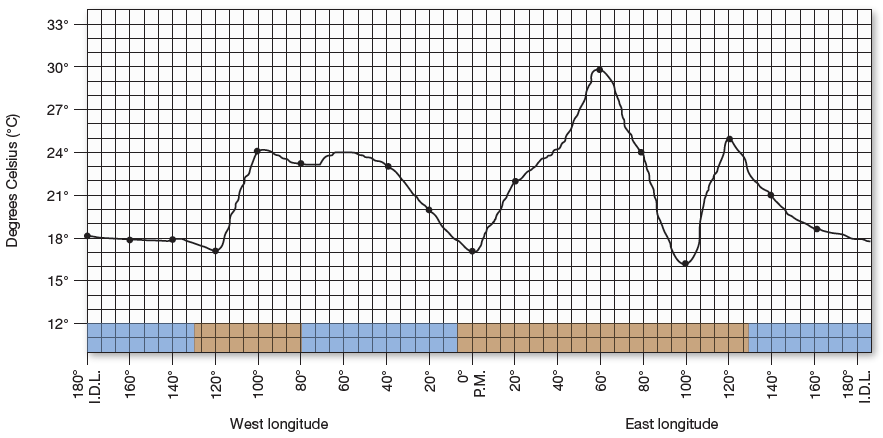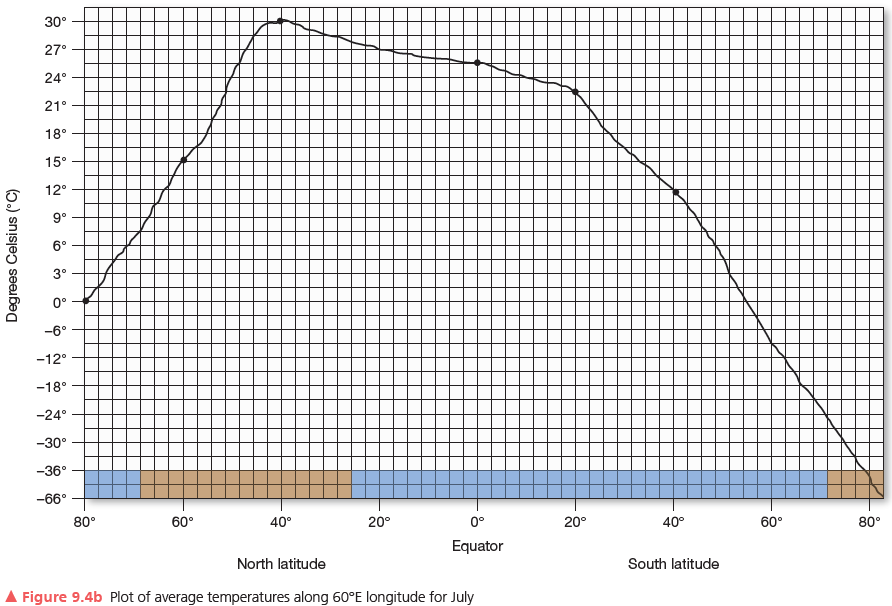Using these maps and graphs, describe and explain the patterns of temperature gradients on Figures 9.4a and 9.4b: Where are gradients steep or gentle?


a) January:
b) July:
a) January: Northern Hemisphere oceans are warmer than the landmasses in winter; Southern Hemisphere oceans are cooler than landmasses in the summer.
b) July: Northern Hemisphere oceans are cooler than landmasses in summer; Southern Hemisphere oceans are warmer than landmasses in winter.
You might also like to view...
A palimpsest is a writing or painting surface, like a canvas, on which more recent writing or painting has covered up previously work, and is thus used to describe something with diverse layers. Why is this a good description for Southeast Asia?
A. In Southeast Asia, there are chronological overlays of animistic, Hindu, Buddhist, Muslim and Christian cultures. B. Overtime, the indigenous people have switched from one crop to another as tastes changed. C. Cuisine in Southeast Asia is influenced by many different cultures. D. The indigenous people of Southeast Asia represent dozens of unrelated language families.
Mesoscale convective complexes
A) are a common cause of severe weather in Canada. B) are typically linear. C) are not able to propagate new cells. D) require potential stability in the atmosphere.
What does Ulrich Beck mean by a “risk society?”
a. A society of democratic ecological dialogue b. A society that accepts the rational choices presented to them c. A society of trust in experts d. A society of fear where we do not have the confidence we once enjoyed and are constantly in jeopardy of environmental bads
Tornadoes are only associated with cumulonimbus clouds
Indicate whether the statement is true or false